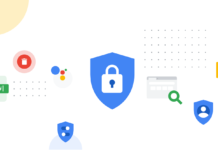Employees are the main security vulnerability of any company, but they can also be its greatest defense against cyber threats.
Currently, only a little more than half of employees receive cybersecurity policy training each year, according to Clutch.
Your company can safeguard its networks by regularly communicating, updating, and training employees about cybersecurity policy.
This article offers proactive tips for securing your company through your employees.
Leadership Should Promote Cyber Security to Employees
Securing your company starts with growing awareness about security threats and how your company addresses them.
Only 52% of employees know if their company has a cybersecurity policy.
One reason why such a knowledge gap about cybersecurity policy exists at companies is because leaders fail to communicate about cybersecurity at all, let alone its benefits. Without prompting, employees are much less likely to download and install security software and abide by cybersecurity protocols.
When employees do encounter cybersecurity regulations, it’s most often through automated signals, such as password update reminders, internet restrictions, or user permission prompts.

More employees, then, recognize individual security measures than a formal policy.
Moreover, many employees exhibit security-oriented behavior without being prompted by their employer. Nearly 80% of employees use password protection techniques.
This disparity indicates that companies can better educate their employees about cybersecurity policy – and that employees are receptive to these measures.
To ensure maximal compliance and efficacy, businesses must educate employees about their role in cybersecurity on a regular basis.
Employees Embrace Password Protections
Password protection is the cybersecurity element that employees interact with most.
This is because employees recognize the value of password protection, both on a personal and professional level.
Most employees take the simplest approach to password protection by updating their passwords regularly.Regular password updates are common because employees are accustomed to password updates and doing so requires little effort.
More complex forms of password protection, though, should be encouraged. Protective measures such as multi-factor authentication and password manager software can create an extra layer of security. .
Instruct Employees How to Securely Use Personal Devices
Employees who use personal devices for work purposes pose a major security threat to companies. While a device itself isn’t inherently risky, a device used carelessly can be.
Bring-your-own-device (BYOD) and remote work policies are viewed by many as benefits to a workplace.
Though these initiatives provide more convenience to employees, your company needs to weigh that benefit against the risk they pose.
The lack of awareness among workers about cybersecurity policy exacerbates the risk of a security breach.
Using personal devices to access company email or shared documents creates a vulnerability that your company may not have direct control over.
Employees expect to use their personal devices for work, so companies should set realistic expectations for the safest way to use them.
This is especially important because it’s often “normal” actions that lead to a security breach.
For example, accessing emails and shared documents is a normalized activity in
the modern workplace. This ease of access undercuts the perceived importance of
security measures and the perceived sensitivity of company data.
Businesses must remind employees which data is sensitive and how to securely access shared documents via personal devices during the routine flow of communications.
Implement IT Security Training
Uninformed or careless employees are a leading cause of security vulnerabilities at companies.
To mitigate these risks, your company needs to educate employees about your cybersecurity policy, updates to the policy, and how to use devices securely.
IT security training doesn’t have to be boring seminars or ritualized trainings. Experiment with cybersecurity training that engage employees such as
- In-person lessons during work hours
- Entertaining online modules
- Scenario-based learning
Each of these approaches creates incentive for people to engage with your company’s policy – the money spent on investing in these sorts of programs pales in comparison to the cost of a data breach.
In addition, it’s important that training is consistent and relevant, meaning that it helps employees address common obstacles.
For example, tedious login credentials and password manager software often work against employees’ best intentions. Demonstrating how to minimize these frustrations and providing a workaround will encourage employees to observe the details of the program.
Finally, make sure to collect feedback from employees about their experience with your cybersecurity training. They are the ones who the policy affects the most, so understanding what will make them engage is crucial.
How to Secure Your Company Through Your Employees
Most employees recognize that cyber security is important, yet aren’t formally aware of their company’s cyber security policy. By educating employees regularly, you can proactively address these risks and encourage effective participation.
Grayson Kemper leads research and content efforts at Clutch for IT and security segments.Clutch is a marketplace for buyers and sellers of business services.







